February 2007
 View Full Print Edition
View Full Print EditionBusiness Briefs
Columns

Communicating Electronically With Investors
By Miranda L. Hughes
The Way I See It
By Mike Bryan

Editor's Note
By Tom Bryan

NBB In Sight
By Joe Jobe
Featured

Briefing the President
By Lindsey Irwin
David Bransby has long been known among his industry peers as an authority on switchgrass. In 2006, amidst all the cellulose hype, he became a popular man with those outside of his circle as well, including President George W. Bush and English entrepreneur Sir Richard Branson. Bransby shares his wisdom with EPM regarding the current state and the future of the cellulose-to-ethanol movement.

2007 Flex-Fuel Vehicle Lineup
By Ron Kotrba
In this splashy photo spread, EPM takes a vivid look at the new and continuing lines of flexible-fuel vehicles available for sale in the United States during this new model year.

Chicken or Egg: Availability Limits E85 Acceptance
By Jerry W. Kram
One of the arguments ethanol producers face is the idea that consumers aren't ready to accept renewable fuels and technology and would rather continue to stick with what they know. However, it looks like the public is ahead of the pundits. A series of polls in 2006 shows widespread acceptance and demand for E85 fuel, if consumers could find a place to buy it.

California Emissions Remission
By Ron Kotrba
E85 holds great promise as an integral part of California's transportation fuels strategy to protect air quality, curb greenhouse gas emissions and increase energy security.

Ethanol Gets the Green Light
By Holly Jessen
IndyCar Series racing fans will witness the power of ethanol during the 2007 season. Every high-powered race car chasing the checkered flag this year will be fueled with 100 percent ethanol. Proponents of the switch from methanol to ethanol hope this is only the beginning and that others will follow IndyCar's lead.

Fanning the Flames
By Lindsey Irwin
Recent advancements in the laboratory and on Capitol Hill have set the ethanol industry ablaze, and it continues to spread like a prairie wildfire in the midwestern United States. Industry leaders would like to see those flames spread to the East and West coasts. The 2006 Biofuels Workshop and Trade Show series, which included events in both San Diego and Nashville, Tenn., was held to address regional barriers that keep the eastern and western states from Midwestern-style ethanol production success despite enormous fuel demands.
A Conduit for Biomass
By Nicholas Zeman
With worldwide production of biofuels at well over 10 billion gallons and $6 billion invested in building new ethanol plants by 2008, a global communication network for biofuels is needed. In addition, businesses worldwide are realizing the benefits of being eco-friendly. To facilitate worldwide communication about responsibly developing the rapidly growing biomass industry, BBI International has developed an initiative called Going Green Globally (g3). The global initiative is an opportunity to get connected without the common duties of member organizations.

Will Consolidation Follow Deconcentration?
By Susanne Retka Schill
Results of the U.S. Federal Trade Commission 2006 Report on Ethanol Market Concentration released in December came as no surprise to those in the industry. The study concluded that rapid expansion in the industry is diluting the big players' market share. Digging deeper, though, just what does the report say about the industry's future? Is a consolidation period looming?
Combating Climate Change with E85
By Anduin Kirkbride McElroy
Sweden is an international leader in the fight against global warming. Included amongst its strategies is the increased use and distribution of high-ethanol blends and flexible-fuel vehicles.
Brazil's Flex Power
By Nicholas Zeman
The market for flexible-fuel vehicles is thriving in Brazil where ethanol plays a large role in the country's transportation fuels sector. Considered a developing country less than 50 years ago, Brazil's ethanol economy has created a dynamic automotive industry.

The Makings of a Logistical Revolution
By Ron Kotrba
One of the largest midstream energy companies in North America, Kinder Morgan, talks with EPM about what it would take to build an ethanol-dedicated pipeline.

Opportunities to Conserve Water
By Holly Jessen
Currently, a typical corn-based ethanol plant takes in more water than the ethanol it produces. That doesn't have to be the norm, however. At the Biofuels Workshop and Trade Show-Western Region, an industry expert talked about trimming water consumption by using current and future technologies.
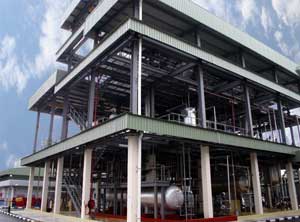
Waving the Palm Branch
By Holly Jessen
The use of palm oil to make biodiesel can dredge up images of barren acreage where lush rainforests once flourished. However, palm oils' use extends far beyond that of the biodiesel industry, causing demand for the product to continue to rise. To combat bad images and to keep up with growing demand, some in the industry have formed an organization charged with developing management practices that conform to a global definition of sustainable palm oil production.
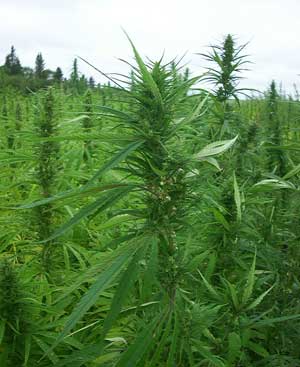
Hemp Biodiesel: When the Smoke Clears
By Holly Jessen
Hemp literally produces a "green" product when it's used to make biodiesel. Despite the allure of the green-hued fuel, a close examination of the controversial crop reveals several barriers for its use as a biodiesel feedstock in the near future. However, as movers and shakers attempt to legalize hemp farming in the United States, those barriers could go up in smoke.
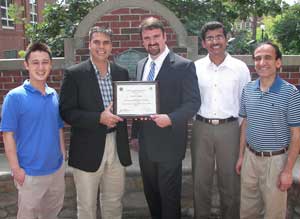
The Preventative Chemist
By Nicholas Zeman
If propylene glycol could be used as a primary component in the manufacturing of antifreeze, the demand for engine coolant in the automotive sector could be a valuable outlet for the glut of glycerin anticipated from the growing biodiesel industry. A University of Missouri professor has developed a process to convert glycerin to the nontoxic propylene glycol that could ease the minds of many biodiesel producers.
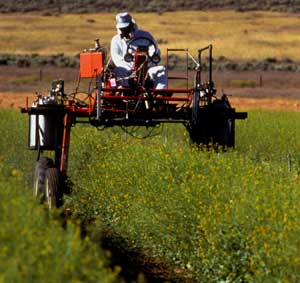
Budding Opportunities in Canola
By Ron Kotrba
Looking over the brilliant yellow fields of canola, which resemble a 19th century impressionist painting, the farmers responsible for this budding success see more than the glowing hue shining from the tender plant's flowers-much more. In fact, canola's opportunity to shine as a leading biodiesel feedstock in the United States has arrived, with a force so great that its presence can already be sensed.
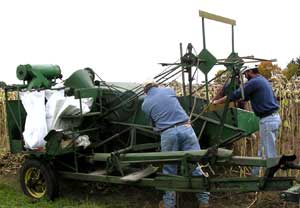
Harnessing Sunflower Power
By Nicholas Zeman
Sunflowers could be a new source of feed and fuel for farmers in the northeastern United States. Experiments being conducted in New Hampshire and Vermont will determine whether the crop is a viable alternative for use as cattle feed and the on-farm production of biodiesel.

Canada Clears the Path for Renewable Fuels Advancement
By Dave Nilles
The Canadian Conservative party's federal government appears to be moving ahead with its campaign pledge regarding renewable fuels. A late December announcement provided hope for biodiesel and ethanol stakeholders, but the expansion of each industry may hinge on the details.

Campaigning for an Energy Future
By Jerry W. Kram
A grassroots initiative dubbed 25x'25 has an ambitious goal to increase the United States' use of renewable energy from 6 percent to 25 percent in less than two decades. While the initiative's coalition of environmental groups, farm organizations and energy producers advocates a wide range of renewable technologies, biodiesel, ethanol and biomass are all part of the plan. More than half of all the renewable energy in 2025 will come from biomass if the organization's predictions prove accurate-with prosperous implications for biofuels producers and rural communities.

Crazy for Camelina
By Nicholas Zeman
Montana Gov. Brian Schweitzer has referred to camelina as his new girlfriend. Although he can't put his arm around her, he believes that Camelina Sativa, a plant known primarily in North America as a weed, has potential as a feedstock for biodiesel production could be just the ticket to revive the economy in eastern Montana.
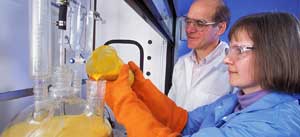
Perspectives on Fuel Quality
By Ron Kotrba
The importance of biodiesel fuel quality was hammered upon at the 2006 National Biodiesel Conference and throughout the past year. With the National Renewable Energy Laboratory's unsettling quality results fresh in people's minds, concerns over the condition of U.S. biodiesel supplies are mounting. Here's what the experts are saying about the state of quality in this industry today and what can be done to improve it.

Biodiesel on a Stick
By Anduin Kirkbride McElroy
Step right up and take a ride on the biodiesel-powered Ferris wheel! That's right folks, 350 million annual carnival-goers now have the opportunity to experience the power of biodiesel!
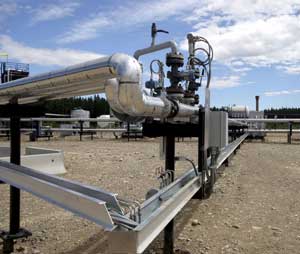
Pipeline Potential
By Anduin Kirkbride McElroy
In order for biodiesel to become a mainstream fuel, distribution costs have to be reduced and consumers need to have better access to the fuel. Pipelines, which are fast, reliable and inexpensive, offer a solution. Although some companies have conducted experiments to test a pipeline's feasibility, at this time it's not clear when or if it's a viable option for biodiesel.

Heat Management Systems: Install them Early, Install them Right
By Julie Ahner and Larry Kapalin
Improving Biodiesel Stability with Fuel Additives
By Glenn Kenreck

Legal Perspective
By Nancy B. Vollertsen and John Chanin
Employers at the Center of Immigration Enforcement
Contributions

Cost Segregation Fuels Depreciation Acceleration
By Jesse McCurry

Water Efficiency as a Result of Sound Water Management
By Tony Stanich















